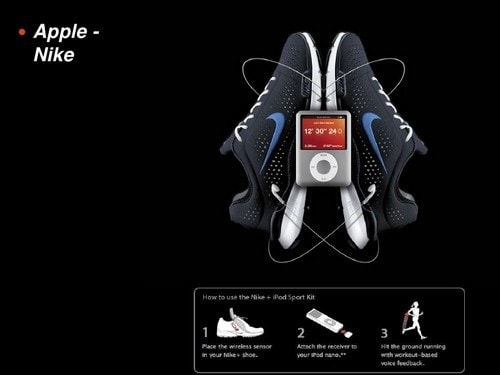Brand Alliance Definition
Brand Alliance is an agreement between the companies that combine two or more individual brands, products or other related assets with an objective to achieve raised awareness in the market and in the minds of the consumers.
Brand Alliance is a crucial part of a business strategy that provides ample of benefits to all the parties involved in the deal ensuring higher profits and broader reach of the market.
Table of Contents
Types of Brand Alliances
There are namely 3 type of brand alliances
1. Co-Brands
It involves the usage and application of two or more brands on the one specific product with an agenda of superior craftsmanship and high-value deliverables to the consumers.
Example: The products such as laptops and computer systems from the renowned technology brand Dell boasts of 3 brand names of Dell, Microsoft Windows, and Intel on its packaging, cases, and all the marketing and promotional activities.
2. Brand Licenses
It is a contractual agreement between the two companies where the first company allows another organization to use its brand name on its products and services to be sold to the consumers in exchange of a licensing fee.
Example: Walt Disney’s business relationship with the Tokyo Disneyland.
3. Cross Marketing:
It is a joint and a mutual agreement between the two companies with an objective of promoting each other’s products and services. It is more like a barter deal arrangement and this concept of cross-marketing and promotion is usually opted by various FMCG and Retail companies.
Example: The first company gives the coupons of the other company to its consumers and the other company promotes the brand name of the first company to its consumers in its direct mails and other promotional material.
The primary agenda and purpose of the Brand Alliance are to generate profits for both the brands involved but at the same time companies add their reputation to the mix for the optimum utilization of the resources and accomplishment of the desired objectives.
Advantages of Brand Alliance
1. Double knowhow
Both the companies involved bring forward their expertise, knowledge, experience, and know-how on the table so that the product quality is improved in manifolds and the high reputation and value of both the brands ensure a superior quality product making a win-win situation of the all concerned.
2. Broader levels of consumer categories
Both the brands bring along their individual legacy, brand strength, and brand values with the huge database of their customers. And the amalgamation of both the brands results in approaching the consumers of both the brands that ensure higher market reach and the broader levels of consumer categories.
3. Reduction of costs
Before the alliance, both the brands ever individually bearing the costs involved in production, packaging, distribution, marketing, and promotion. But once the Brand Alliance is in the place and with the terms of profit sharing, the sharing of costs and overheads also comes into the picture resulting in the reduction of costs.
4. Instant expertise
Sharing of knowledge and expertise is one of the biggest merits and advantages of the Brand Alliance as both the brands involved have a specific set of knowledge and expertise and when both of them join forces through the alliance, there is an instant sharing of expertise to design and come up with the product or a service that will set a new benchmark in the market generating higher sales and revenue for both of them.
5. Saved investments
As the costs and overheads of both the brands are shared and divided, there is a saving on investments. Plus as the expertise and know-how are also shared, the brand doesn’t need to invest additionally in the same by acquiring it from the outside sources.
6. Higher sales and profits
If the alliance results in the superior quality product or a services working as an instant hit in the industry and with the target market and the consumers, there is an optimum return on the investment by both the parties that bring along higher sales and profits. Plus the shared costs work as an additional benefit.
7. Broader market exposure
Both the brand involved in the alliance have their specific set of targeted consumers and the markets and with the amalgam of both the brands results in the broadening of the markets and the higher level of customer exposure ensuring more sales and more profits.
The concept of Brand Alliance has been in the industry for a very long time owing to the host of merits and advantages.
Examples of Brand Alliance
BMW and Louis Vuitton
The Brand Alliance of BMW that is a luxury car giant with the luxury retail giant Louis Vuitton is a sheer epitome of shared values and ethos of luxury, creativity, technology, innovation, and style. The alliance came into the picture when BMW launched its unique sports model edition car BMW i8 and Louis Vuitton exclusively designed and crafted a 4 piece set of suitcases and bags that seamlessly and perfectly fit into the car’s rear parcel shelf. Plus the bags were designed matching as per the interiors of the car.
The alliance was wowed and adored by the customers of both the brands and created a distinct business strategy in the market.
Alexander Wang and H & M
Alexander Wang and H & M are the two retail giants with the former targeting the niche market with its high-end shoes and apparels and the later is a high street brand catering to the young generation offering trendy fashion apparels, shoes, and accessories.
Both the brands came into an alliance with the Alexander Wang exclusively designing shoes for a limited period of time showcasing at the line of stores of H & M for a limited period of time. Usually, the pair of shoes from Alexander Wang costs about $350 but for the exclusive line for H & M, there was a special price of $35 with an objective of supporting each other’s brand positioning and making the new generation of potential customers aware about the brand name and the products of Alexander Wang.
Liked this post? Check out the complete series on Branding


Hi Hitesh
Very impressed with your brand alliance notes.
Any ideas about an innovative strategy for a wine business?
How to market such a traditional drink in an innovative manner to attract young consumers who mostly drink spirits and beers?
Regards
Sarab
I learned from you during my post graduation days, I am still learning from you sir. fan of your expertise and dedication for marketing.